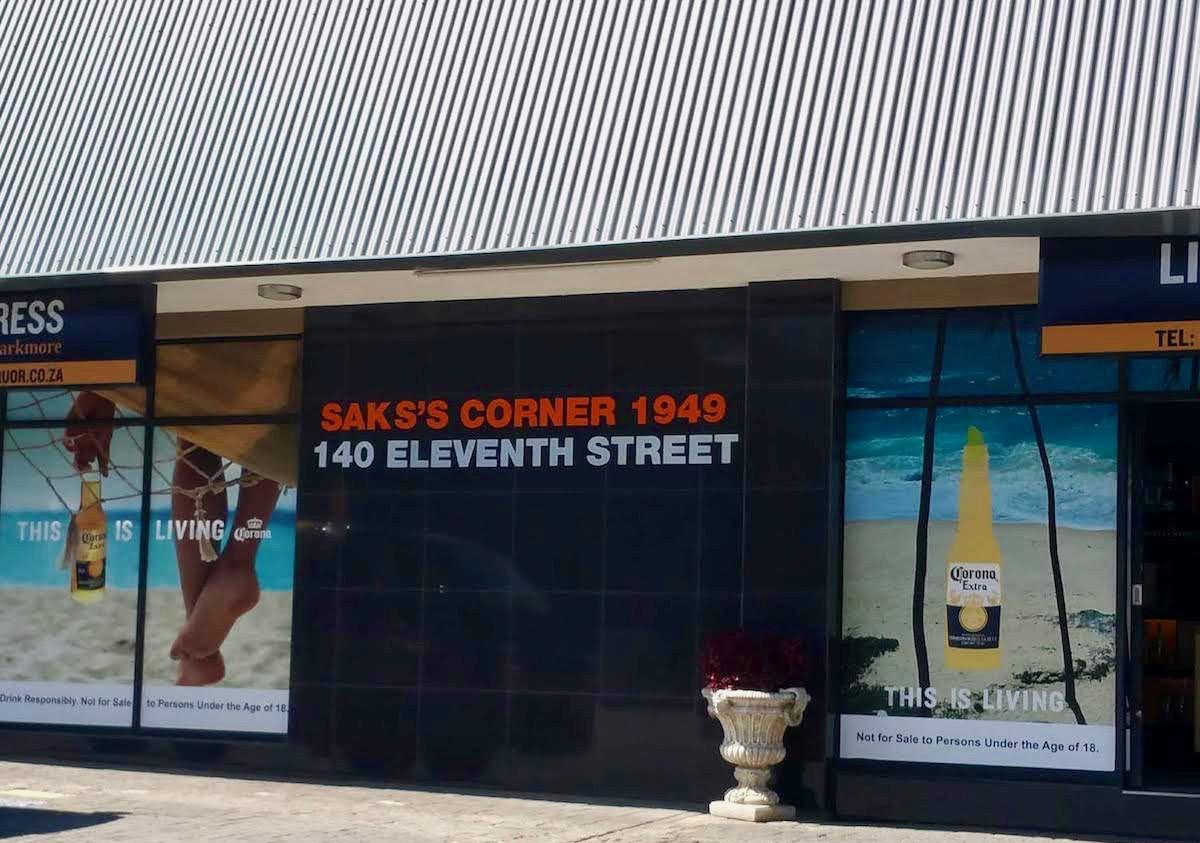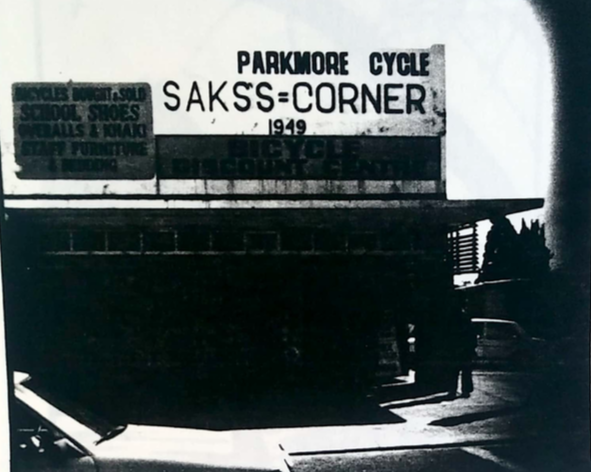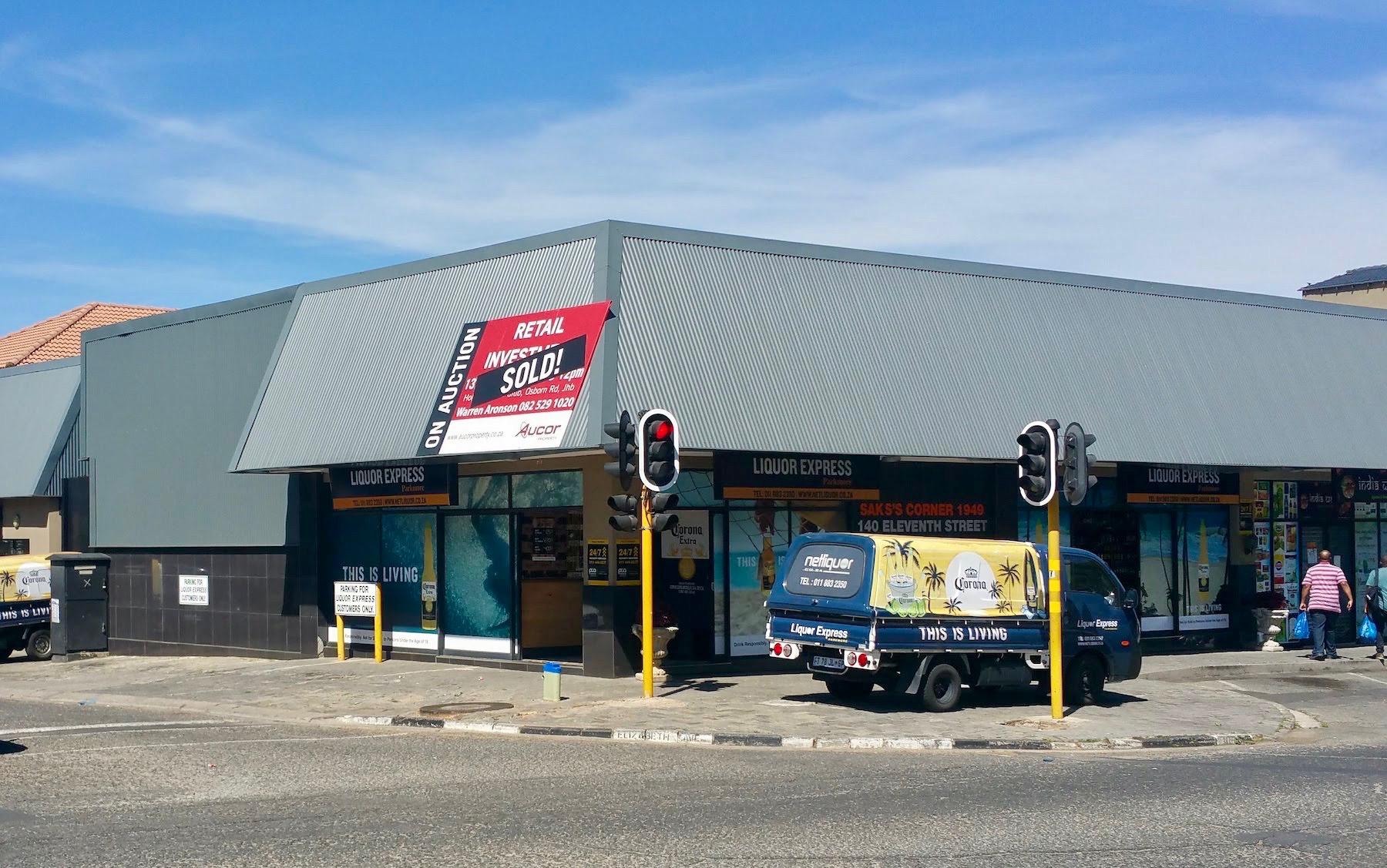
Disclaimer: Any views expressed by individuals and organisations are their own and do not in any way represent the views of The Heritage Portal. If you find any mistakes or historical inaccuracies, please contact the editor.
If you walk down 11th Street in Parkmore, a short distance from the Sandton CBD, you may see some bright orange signage announcing 'Saks's Corner 1949'. Considering Sandton City was only built in the early 1970s there is certainly a story to be told. The following piece was written by Juliet Marais Louw in 1982 and reveals the history behind one of Sandton's oldest shops. Unfortunately the original structure has been demolished but the memory of the famous landmark lives on.
On the corner of 11th Street and Elizabeth Avenue in Parkmore, stands the well-known landmark of Saks’s Corner with the date 1949 on the wall outside.
Old photo of Saks's Corner (Sandton Archives)
Who was Saks and where did he come from? Harry Saks was born in Saville, Lithuania in 1911. When he was thirteen he went to live in Israel and then in Palestine where he stayed for several years. He led an exciting life there working as a guard on a farmer’s land where he dressed as an Arab to fool the thieves and snipers who roamed around and were a constant menace. He also worked as a photographer and slept on a roof-top at night. He had to pay the owner of the house 50 cents a month for his bed and when he left for South Africa in 1929 he still owed the man 50 cents for the last month of his stay there. This fact always troubled his conscience and many years later when he was on holiday in Israel, he contacted the man and paid back his debt. The man was most surprised and apparently he put the money in the charity box.
Harry’s older brother Sasha was living in South Africa and Harry came out here to join him. His first job was to work for a storekeeper in Hammanskraal and he was paid five pounds a month for taking merchandise round on a horse and cart to the surrounding farms. After a while he was able to open his own business in Hammanskraal and he sold it in 1937 when he and his brother went across to Lithuania to visit their parents. The Second World War was imminent and although the two brothers managed to obtain visas for their parents, the parents refused to accompany them. This was a sad mistake as thirty-three members of Harry’s family died in the gas-chambers, including his parents, a brother and sister with their families.
In 1938 Harry met Grace Tabak of Pretoria and they were married in 1939. They opened a little shop in Pienaar’s River and built on a small room and a kitchen in order to make it habitable. Every bucket of water that they needed had to be fetched from friends living near the station. A rondavel a hundred metres across the veld served as their bedroom. Grace had been used to the comforts of civilisation but she made the best of things, even when the rain poured down the walls and set their furniture and carpets afloat.
Grace was hospitalised in Johannesburg after an attack of appendicitis and she spent some time with her mother in Pretoria while recovering from the operation. She was delighted when Harry arrived one day to inform her that they were not returning to Pienaar’s River as he had bought a store in Parkmore, just outside Johannesburg.
In January 1940, Harry and Grace Saks moved to Parkmore. They bought the stand which had the small store on it and lived next to it in a house on the site. Only about 90 pounds a month was made at the shop and it was a difficult struggle for Harry and Grace. Harry still had a little stock from his shop at Pienaar’s River and he sold it at reduced prices to other shops to meet his commitments. It was four years before the Saks’ were on their feet financially. As things improved for them, Harry bought stands all over Parkmore for about 150 pounds and was very excited when he could sell them later at double the price.
Saks's Corner in 2018 (The Heritage Portal)
Because of the war, there were shortages but Harry’s customers increased in numbers. Regardless of colour or financial status, he treated them all with scrupulous fairness, supplying everyone with their little quota of sugar, flour, rice and so on. Now and then he was woken at night by persons offering him contraband sugar stolen from factories, and on one occasion a truckload of stolen bicycles. He could have made a fortune but his reply was invariably: “I want to sleep in my own bed at night, not in jail".
By now, Harry and Grace had three sons and because of their schooling the family moved to Parkwood but Harry still came to Parkmore every day to run their shop. They eventually sold it and moved to Jan Smuts Avenue where they had a drapery shop at the corner of Chester Road. Later, they ran a toy and hardware shop in the neighborhood. They were now able to travel extensively and visited Greece, London, Paris, Spain and South America and it was at this time on a visit to Israel that Harry was able to pay back his debt of 50 cents.
Harry had to sell the hardware shop because of failing health but after a while they returned to Saks’s Corner, this time with a partner. After six years the business was sold.
Harry spent the last twelve years of his life in a flat in Corlett Drive and it was during this time that he could play bowls and take Hebrew lessons. Not only was he a learned man but he was also very charitable and supported a sister in Israel throughout his life. His children were the centre of his life and his eldest son became the principal of Rivonia Primary School while the other two became businessmen in Johannesburg.
Harry Saks was typical of of the Jewish immigrant who found freedom and opportunity in South Africa and made the best use of them. In doing so he became a valuable citizen of our country.
Comments will load below. If for any reason none appear click here for some troubleshooting tips. If you would like to post a comment and need instructions click here.


